Dive into the heart of Africa, a land where every hidden nook whispers tales of mystery and marvel. Each destination is rich in history and offers a glimpse into the untouched and unknown world of secret African locations that make this continent a wonder to behold.
Far beyond the usual tourist trails lies a world few have witnessed, filled with secret spots that astonish and awe. This adventure isn’t just a journey; it’s a treasure hunt through ten of Africa’s most secretive locales.
1. The Enchanted Forests of Kakum, Ghana
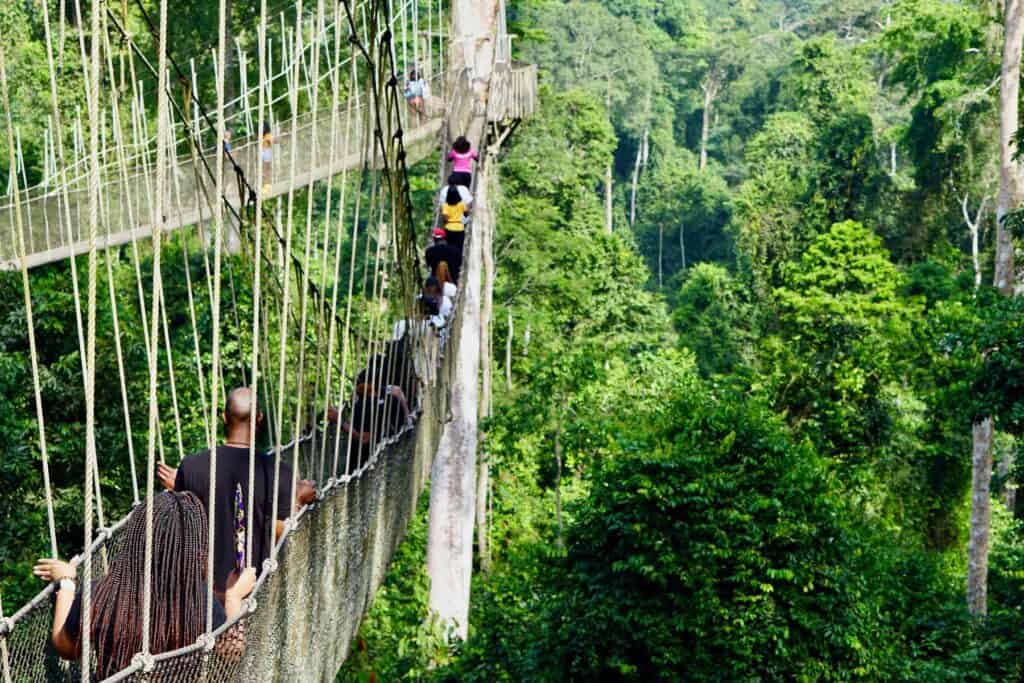
Hidden deep within the heart of Ghana lies Kakum National Park, a lush paradise that seems like something out of a fairy tale. This breathtaking spot is famous for its canopy walkway, which hangs 100 feet above the ground, offering a bird’s-eye view of the vibrant life teeming below. Imagine walking among the treetops, surrounded by the calls of exotic birds and the rustle of leaves, where every step forward brings you closer to nature’s untouched beauty.
Kakum is not just about stunning views; it’s a vital sanctuary for many endangered species, including forest elephants and over 300 species of birds. The park is also a place of conservation, helping to preserve the rich biodiversity that makes this area so special. For those who seek adventure mixed with a dose of nature conservation, Kakum offers the perfect blend of thrill and learning.
Whether you’re a nature lover or an adrenaline junkie, Kakum’s enchanted forests provide a unique escape into a world less traveled. Here, every visitor has the chance to connect with nature and experience the magic that lies hidden in the dense, verdant greenery.
2. The Sunken Villages of Lake Volta, Ghana
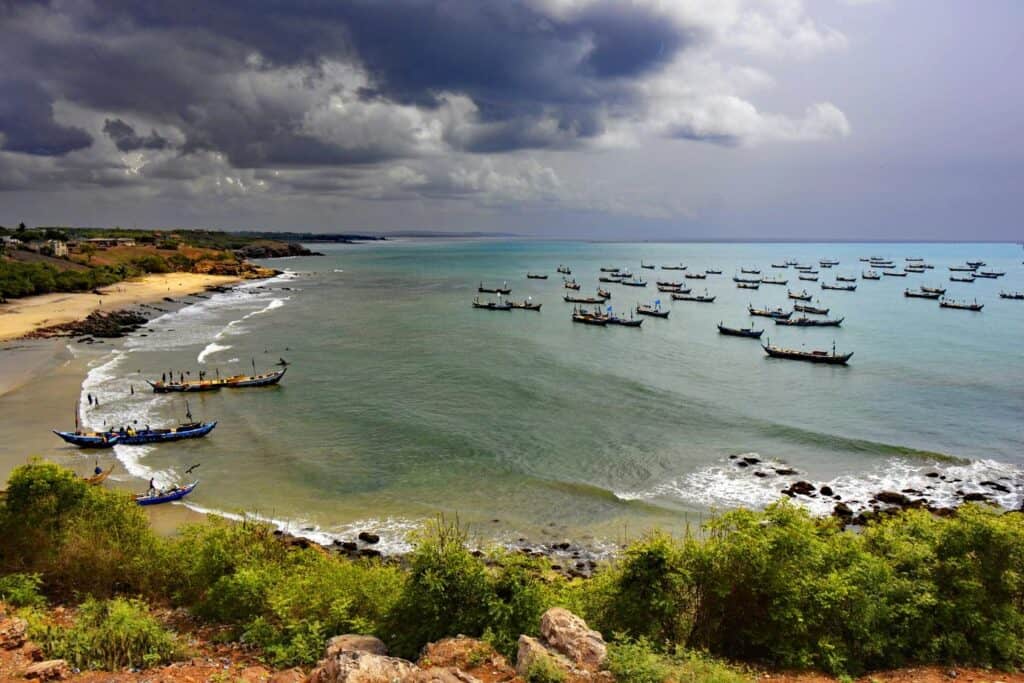
Venture into the watery depths of Lake Volta, one of the largest man-made lakes by surface area, located in the heart of Ghana. This massive lake was formed by damming the Volta River, a decision that submerged numerous villages and forever altered the landscape and local history. Today, these sunken villages create an eerie underwater world that’s ripe for exploration.
For adventurers and history buffs alike, diving into Lake Volta offers a unique glimpse into the past. As you swim through the clear waters, you might spot remnants of old buildings and daily artifacts preserved beneath the waves. It’s a profound reminder of the impact human actions have on nature and communities.
Above water, Lake Volta is a hub of activity. Local fishermen in their dugout canoes dot the expansive waters, continuing the age-old traditions of their ancestors. The lake also supports a diverse ecosystem, offering bird watchers and nature lovers a chance to see some of Ghana’s indigenous bird species amidst the breathtaking scenery.
This blend of natural beauty and historical intrigue makes Lake Volta a must-visit for anyone traveling to southern Africa. It’s not just a place to visit but a place to remember and reflect upon the delicate balance between human progress and nature conservation.
3. The Lava Lakes of Erta Ale, Ethiopia
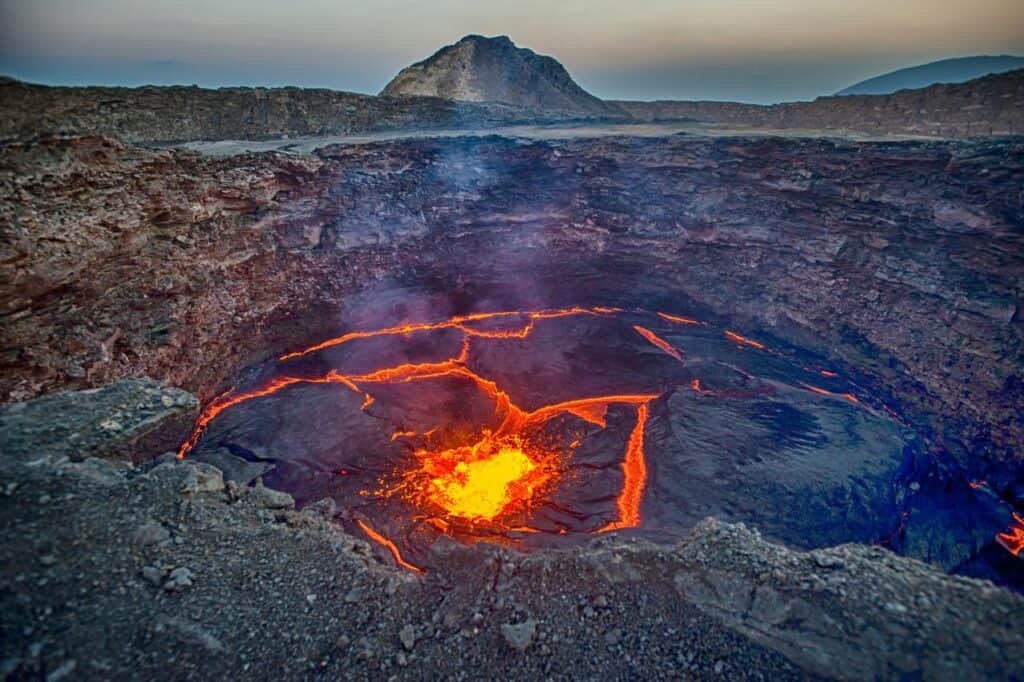
Erta Ale, located in the stark landscape of Ethiopia’s Danakil Depression, offers one of the most amazing destinations in East Africa. Known as the “smoking mountain” and “gateway to hell,” Erta Ale’s persistent lava lake is one of only six in the world, making it a prime location for those fascinated by volcanic activity. The fiery glow of molten lava against the night sky creates a surreal experience, reminiscent of the planet’s fiery beginnings.
Visitors to Erta Ale can witness the raw power of Earth’s geology—here, the ground literally bubbles with heat and energy. This unique location provides not only a thrilling adventure but also a stark reminder of nature’s untamed force. The trek to the volcano’s rim offers a challenging yet rewarding experience, perfect for those who chase off-the-beaten-track adventures and wish to stand at the edge of one of nature’s most incredible spectacles.
The area surrounding Erta Ale is also significant for wildlife enthusiasts and nature lovers, hosting a variety of desert-adapted species that thrive in this harsh environment. A visit to this remote part of the African wild allows adventurers to experience solitude amidst spectacular scenery, where the stark beauty of the Ethiopian desert unfolds as far as the eye can see.
4. The Ancient Rock Churches of Lalibela, Ethiopia
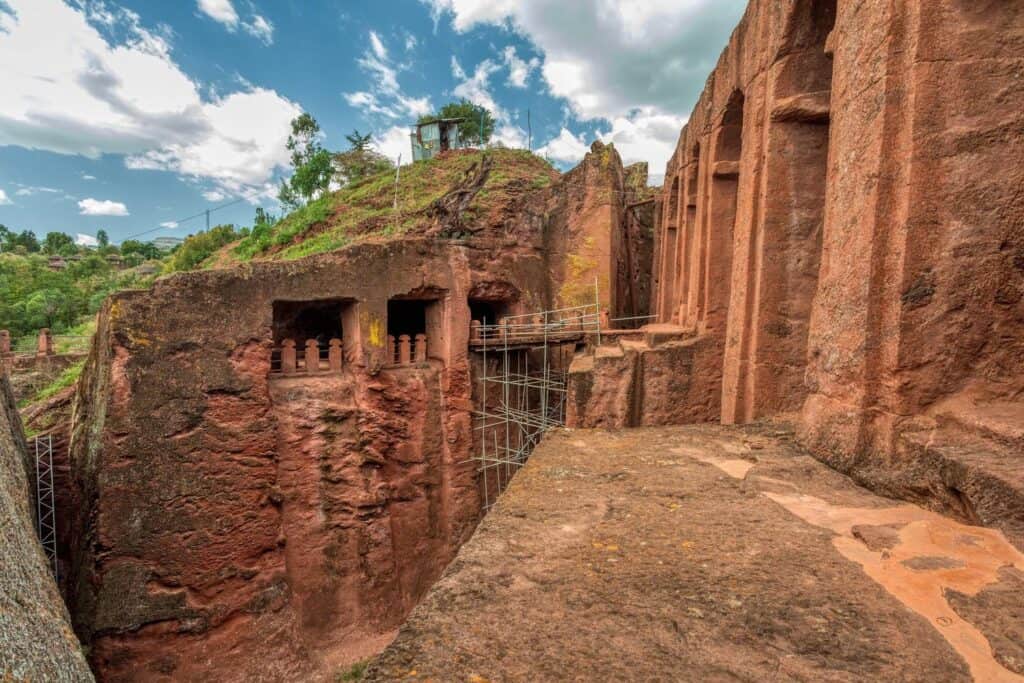
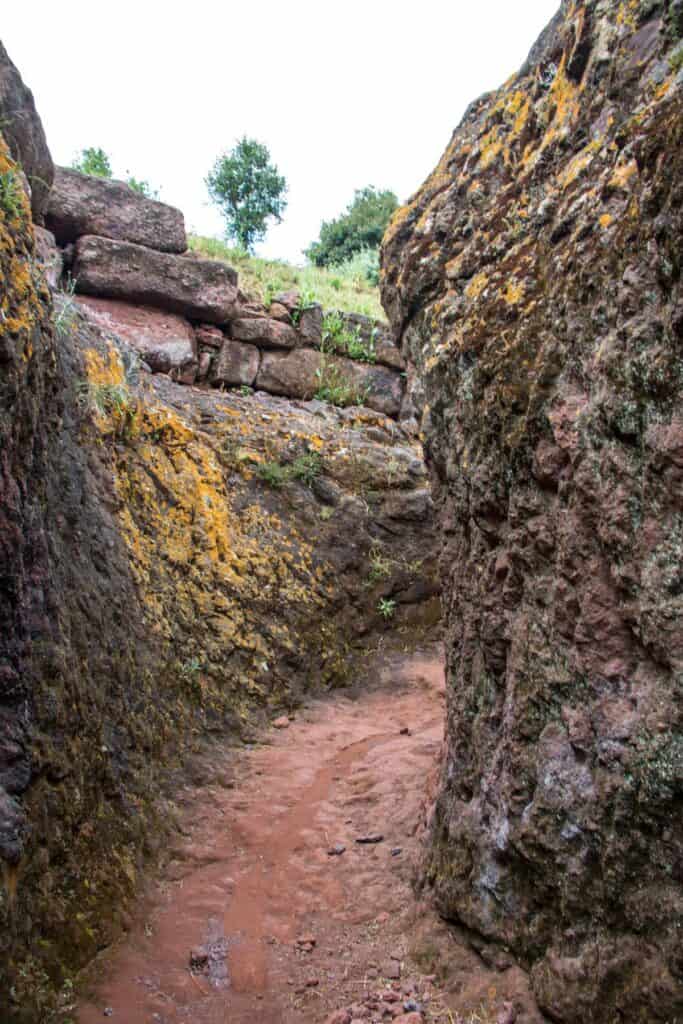
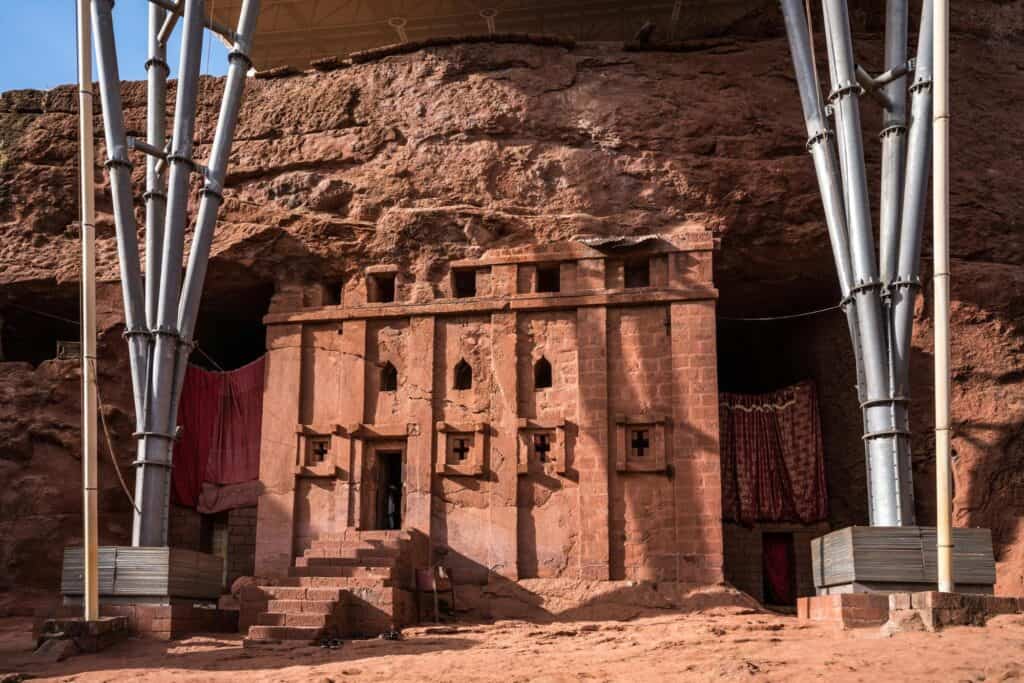
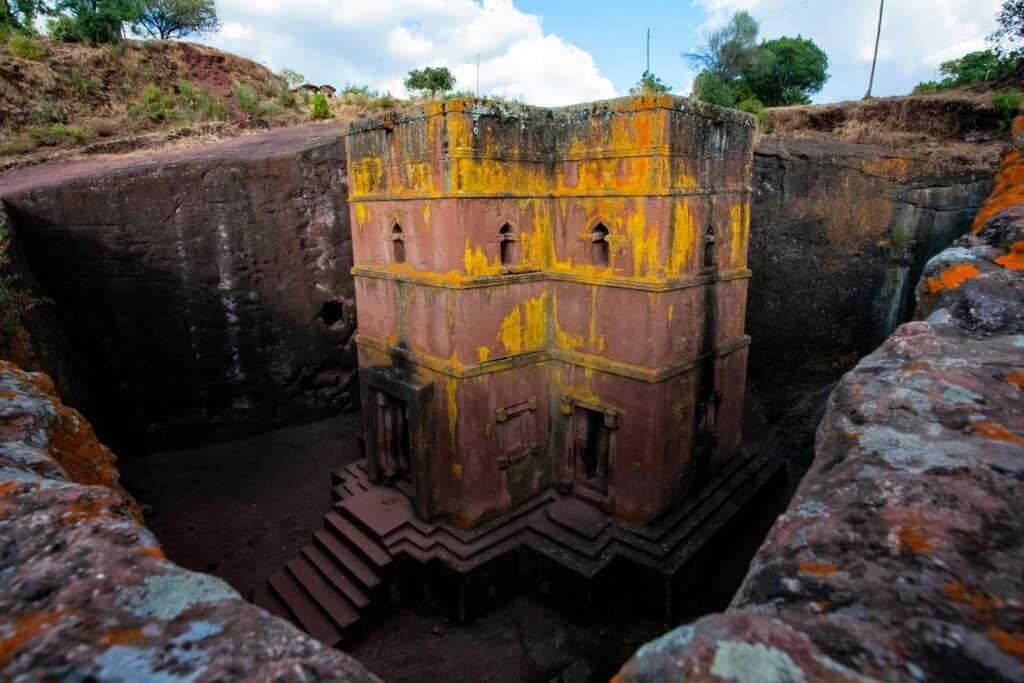
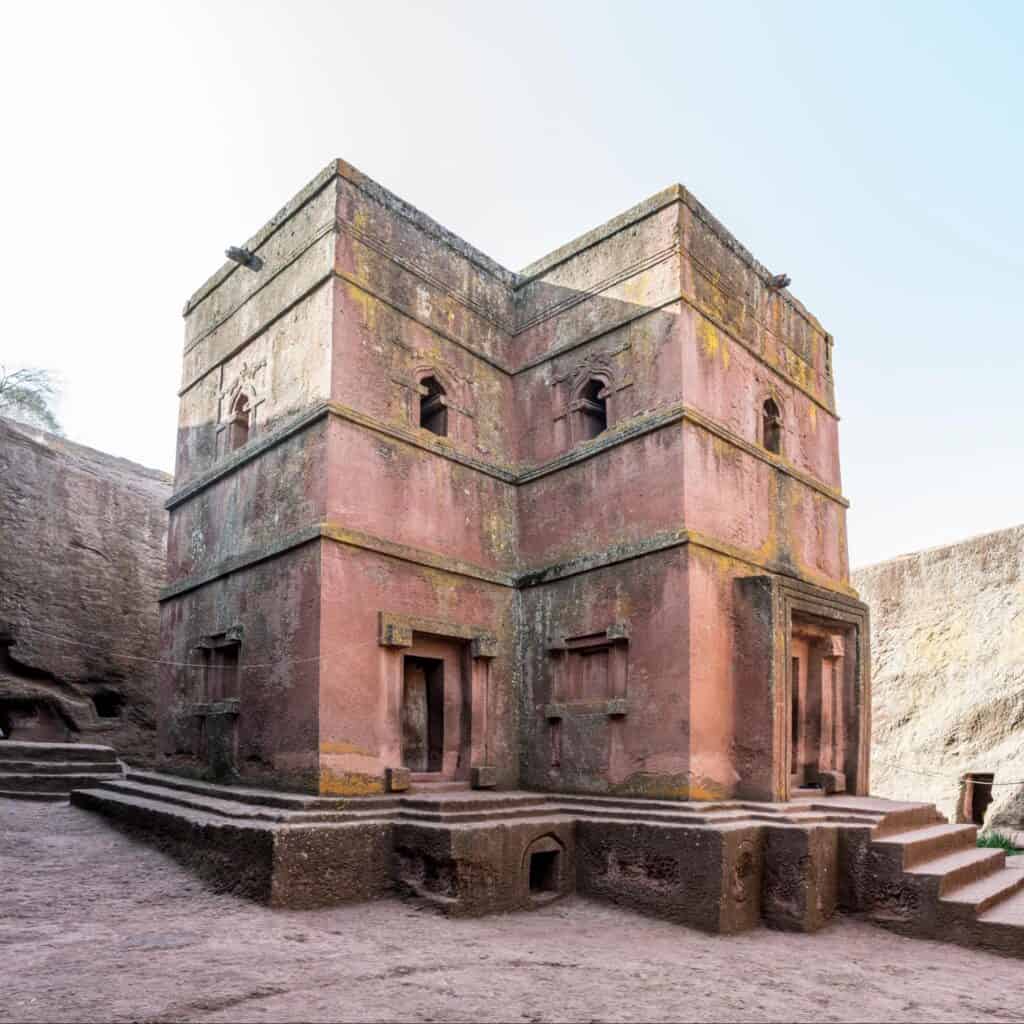
In the heart of Ethiopia lies one of the most extraordinary secret African locations – Lalibela, a town famed for its ancient rock-hewn churches, which are a UNESCO World Heritage Site. Carved directly from the rock in which they stand, these architectural marvels are not only a testament to human ingenuity but also a significant spiritual sanctuary for the Ethiopian Orthodox Christian Church.
The journey to Lalibela is a step back in time, offering visitors a glimpse into a unique blend of spirituality, architecture, and history. Each church, cut from a single block of granite with its roof at ground level, is connected by an intricate system of tunnels and passages that add to the sense of mystery and discovery. The most famous of these, Church of St. George, is shaped like a cross and is often highlighted for its striking craftsmanship.
Visiting Lalibela during one of the major Christian festivals transforms the experience, with pilgrims in white robes adding to the ethereal atmosphere, creating a vivid tableau of faith and tradition. This location offers more than just historical insight – it’s a profound encounter with a living cultural heritage that continues to inspire and awe visitors from around the world.
5. The Desert Elephants of Hoanib, Namibia
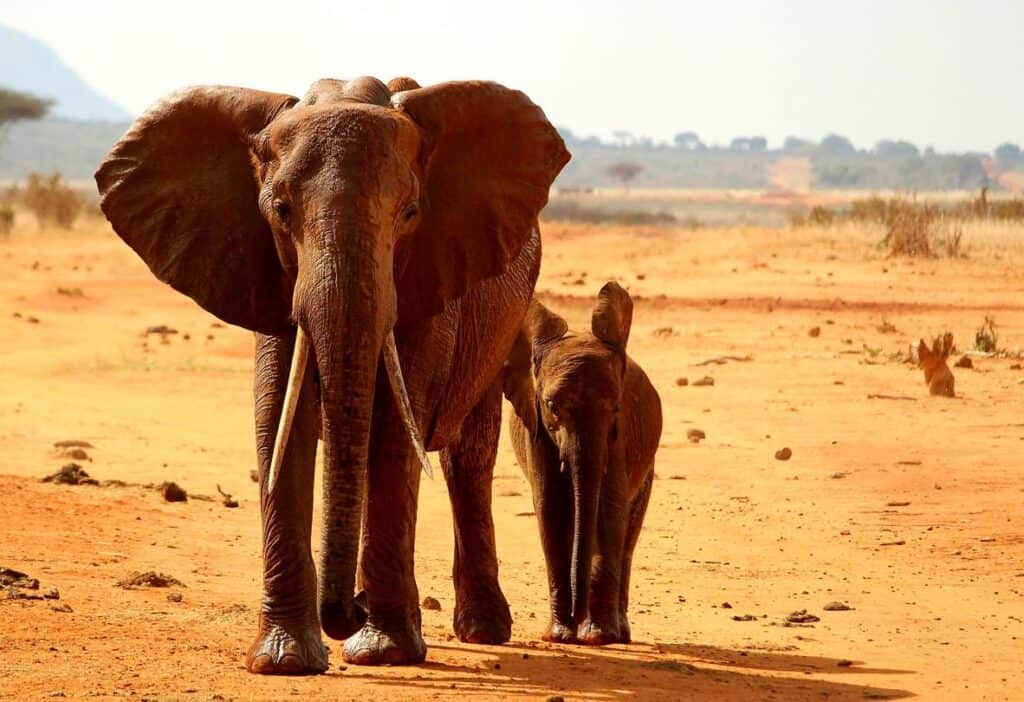
In the arid, expansive landscapes of Namibia’s Hoanib Valley, another secret African location awaits the intrepid traveler. Here, amidst the rugged terrain of the Namib Desert, roam the rare desert elephants, adapted uniquely to one of the harshest environments on earth. These magnificent creatures have evolved to traverse vast distances in search of water, their survival a testament to nature’s resilience.
Witnessing these desert elephants in their natural habitat offers a rare glimpse into the lives of one of Africa’s most iconic species. Unlike their savannah cousins, the desert elephants have longer legs and smaller bodies, adaptations that allow them to travel across sandy dunes with ease. Their presence in this landscape is a stark reminder of the adaptability and endurance of wildlife.
Visitors to Hoanib can explore this unique ecosystem through guided safaris, which not only offer close encounters with the desert elephants but also emphasize the importance of conservation efforts in protecting these endangered animals. Each safari is an opportunity to learn about the delicate balance of ecosystems and the critical role each species plays in maintaining it. This location promises not just a travel experience but an unforgettable lesson in biodiversity and conservation.
6. The Whispering Dunes of Merzouga, Morocco
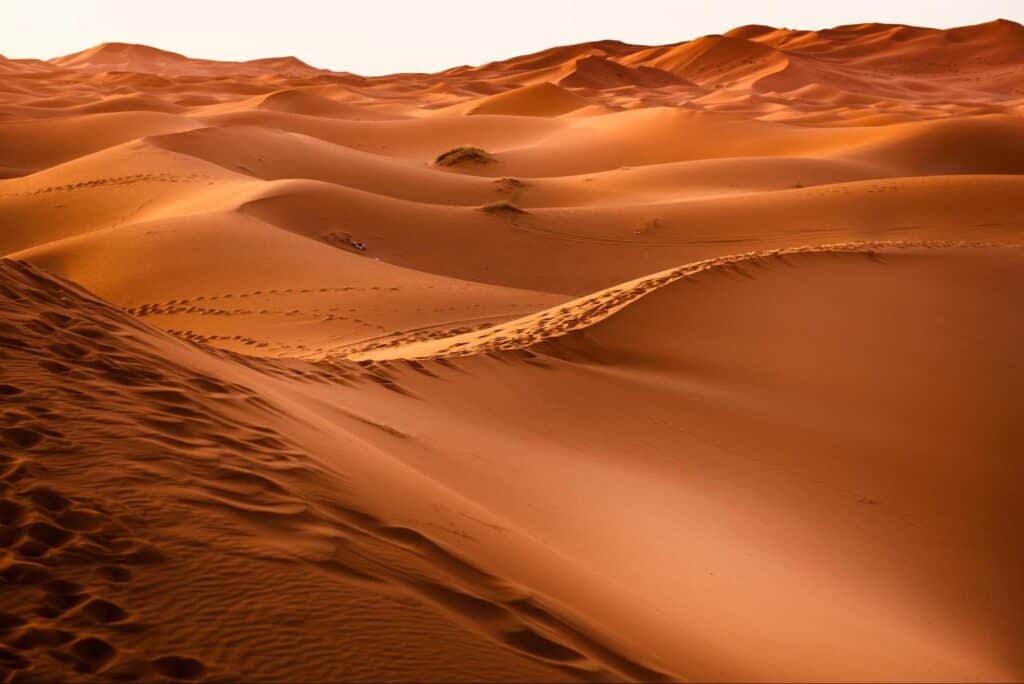
Merzouga, located in southeastern Morocco, is famed for its breathtaking Erg Chebbi sand dunes. This secret African location is where the Sahara Desert unfolds in all its majestic beauty, featuring towering dunes that reach up to 150 meters in height. The ever-changing landscape, shaped by the winds, creates an amazing backdrop that feels like stepping onto another planet.
The dunes of Merzouga are not only a sight for sore eyes but also a playground for adventure seekers. From sunrise camel treks to heart-pounding dune bashing, each activity offers a different way to experience the vast, sandy expanses. As the sun sets, the dunes take on a soft, golden hue, creating a serene and almost surreal environment—a perfect moment for reflection and relaxation.
For those interested in cultural experiences, the nearby Berber villages provide a warm welcome to travelers. Here, visitors can learn about the traditional ways of life, from music and dance to crafts and cuisine, adding a rich cultural dimension to their visit.
Merzouga is a gem hidden in the vastness of the Sahara, offering both tranquility and thrill, making it an unforgettable part of any Moroccan adventure.
7. The Underwater Waterfall Illusion of Mauritius

One of the most visually stunning phenomena in the world can be found off the coast of Mauritius. Known as the “Underwater Waterfall,” this illusion is a breathtaking sight that is actually a trick of the currents and sand. From above, the patterns of sand and silt deposits being swept along the ocean floor create the appearance of a waterfall plunging into the depths—a mesmerizing scene that has captured the attention of nature lovers and photographers alike.
This spectacle is best viewed from a helicopter tour, where you can see the dramatic contrast of colors and the grand scale of the illusion. For those who prefer to stay on the water, boat rides around the area offer a closer look at the beautiful beaches and pristine waters that make Mauritius a prime destination in the southern hemisphere.
The island of Mauritius is not only about stunning natural wonders but also about rich biodiversity. The surrounding coral reefs are teeming with diverse marine life, including tropical fish and even whale sharks, making it a popular spot for snorkeling and diving. This “waterfall” is just one of the many unique attractions that make Mauritius a must-visit for anyone seeking extraordinary travel experiences.
8. The Forgotten Kingdom of Mapungubwe, South Africa
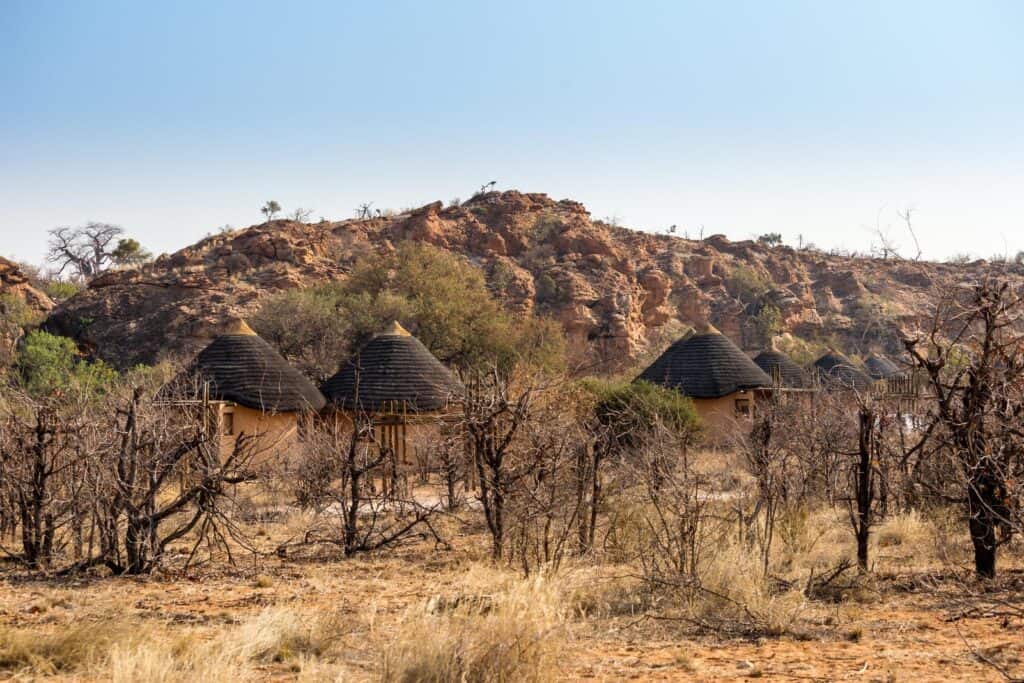
Mapungubwe, once a flourishing kingdom in southern Africa, is today one of the continent’s most compelling secret African locations. Situated at the confluence of the Limpopo and Shashe Rivers, this UNESCO World Heritage site was the center of the largest kingdom in the region before it was abandoned in the 14th century. The area is renowned for its rich history and the archaeological discoveries that reveal a sophisticated society that traded gold and ivory with China, India, and Egypt.
Visitors to Mapungubwe are treated to more than just a history lesson; the natural surroundings offer a stunning vista of the Limpopo River valley, which is home to a variety of wildlife including elephants, leopards, and white rhinos. The park’s unique biodiversity extends to its bird species, making it a haven for bird watchers.
The highlight for many visitors is the iconic hill of Mapungubwe, where the ancient kings were buried with their riches. Climbing this hill offers not only a panoramic view of the surrounding landscape but also a tangible connection to the past. Exploring Mapungubwe gives a glimpse into a vanished empire and a lesson on the transient nature of human endeavors against the backdrop of enduring natural beauty.
Recommended Reading: Safari Tents South Africa: From Glamping to Luxury Camps
9. The Moon Landscape of the Namib Desert, Namibia
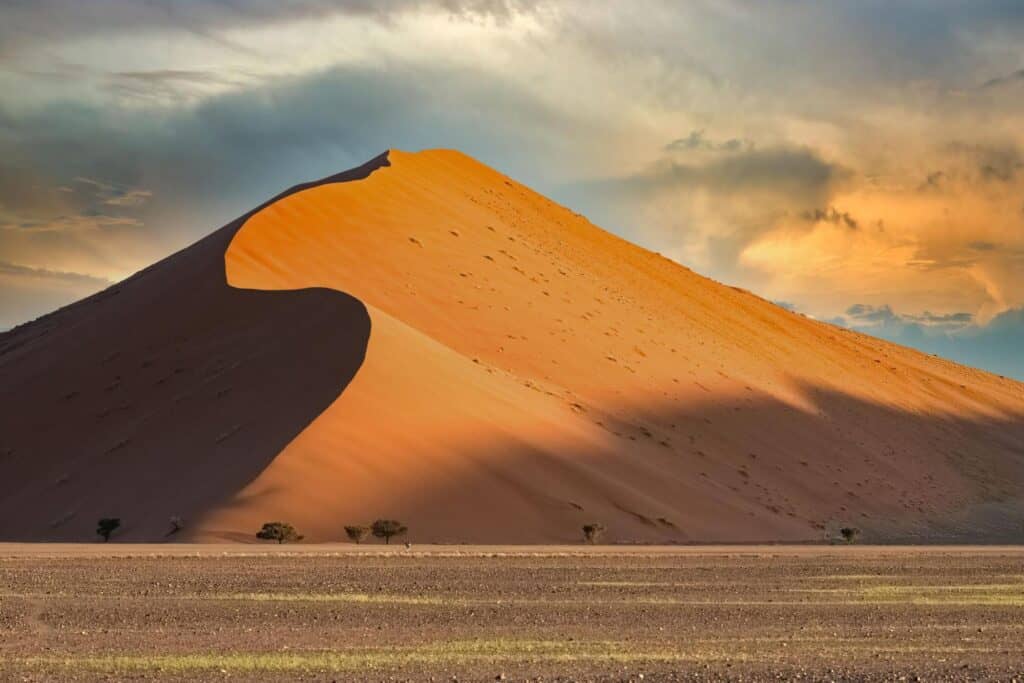
Travel to the Namib Desert in Namibia, and you’ll find a landscape so alien and stark it’s known simply as the Moon Landscape. Carved over millions of years by the Swakop River, this area showcases dramatic valleys and hills that mimic the moon’s surface, making it a spectacular sight for photographers and nature enthusiasts alike. The barren, undulating terrain, with its shades of gray and ochre, offers a stark contrast to the typical image of a lush, vibrant Africa.
This remote part of the Namib Desert is not just a feast for the eyes but also a geological wonder that attracts scientists and travelers alike. The arid conditions and minimal vegetation reveal a landscape that has remained largely unchanged for millions of years, providing a unique window into the Earth’s ancient past.
Visitors can explore this amazing destination through guided tours that offer insights into the desert’s ecological and geological significance. These tours often include visits to nearby attractions such as the Welwitschia plains, home to the ancient Welwitschia mirabilis plants, some of the oldest living organisms on Earth. The Moon Landscape offers a unique and unforgettable travel experience, blending otherworldly beauty with profound natural history.
10. The Blue City of Chefchaouen, Morocco
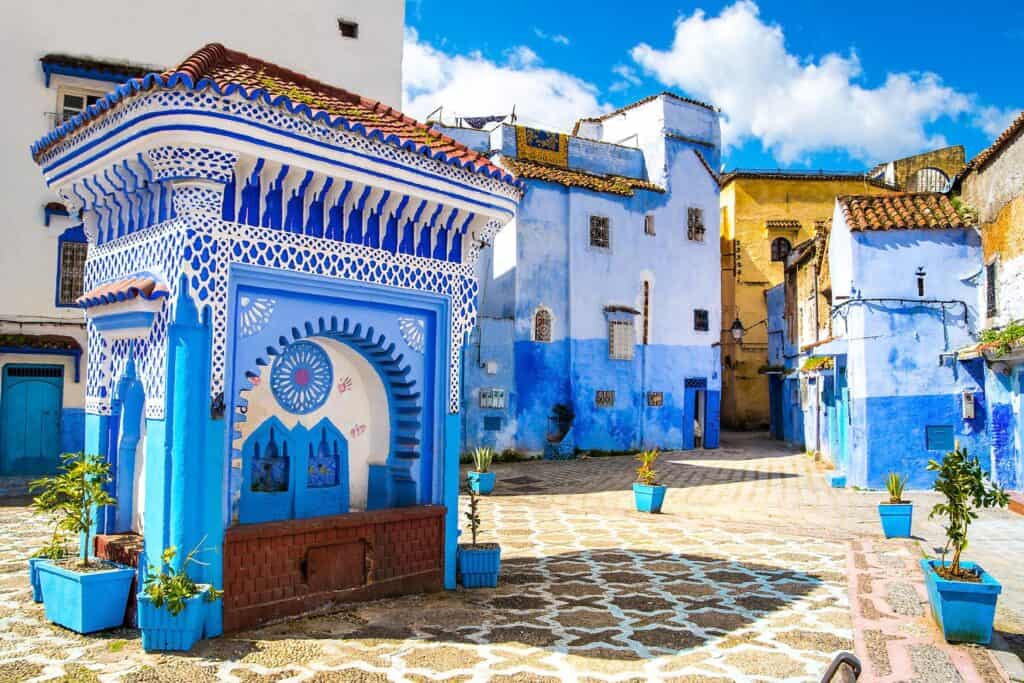
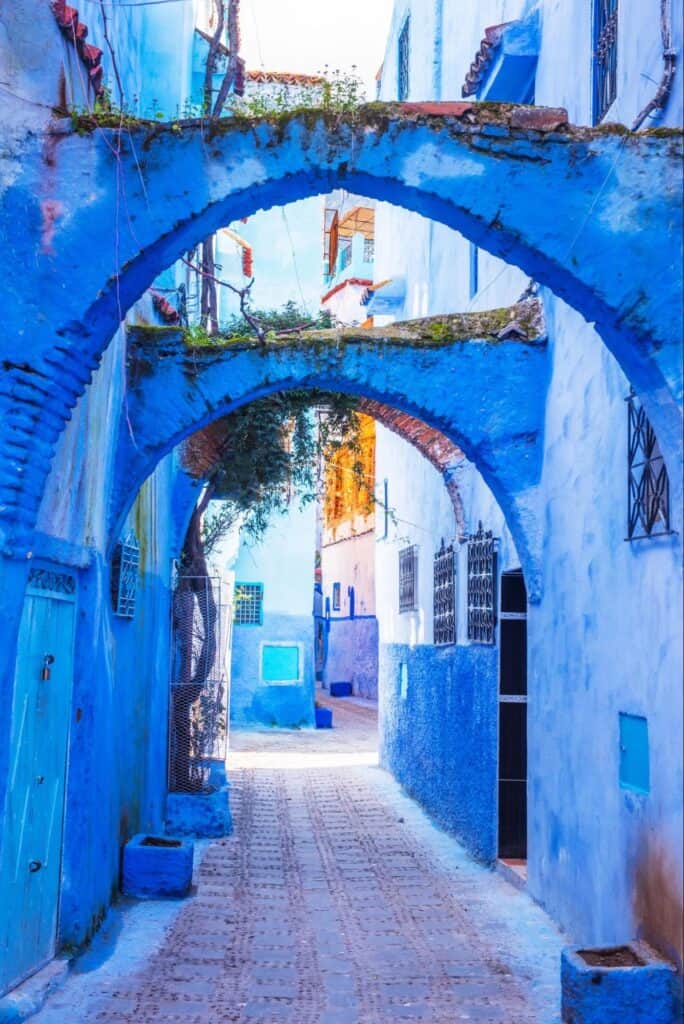
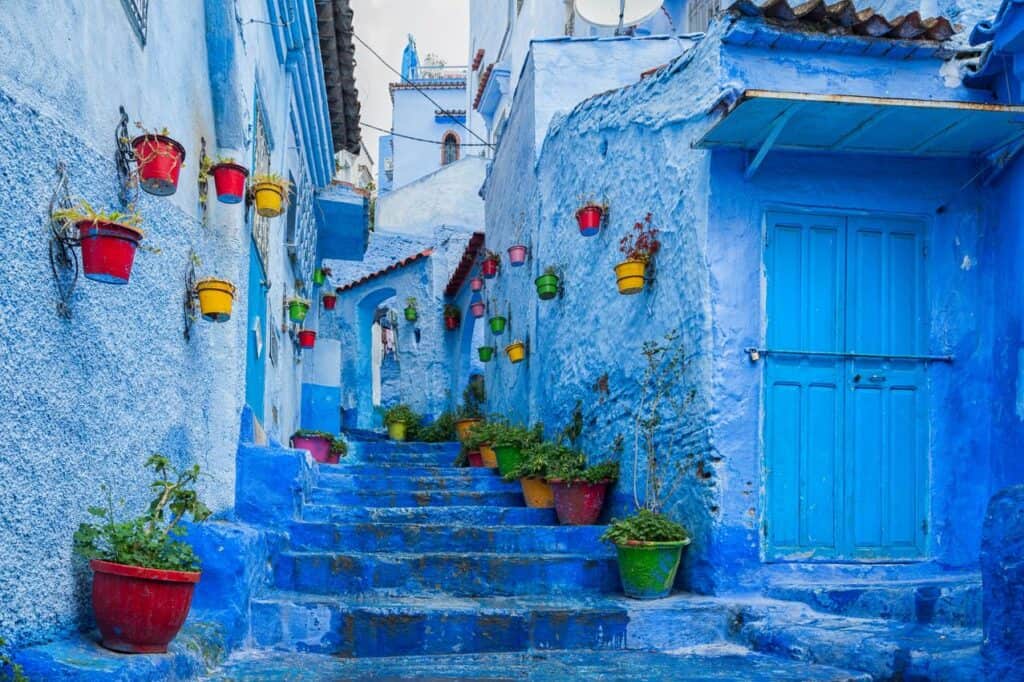
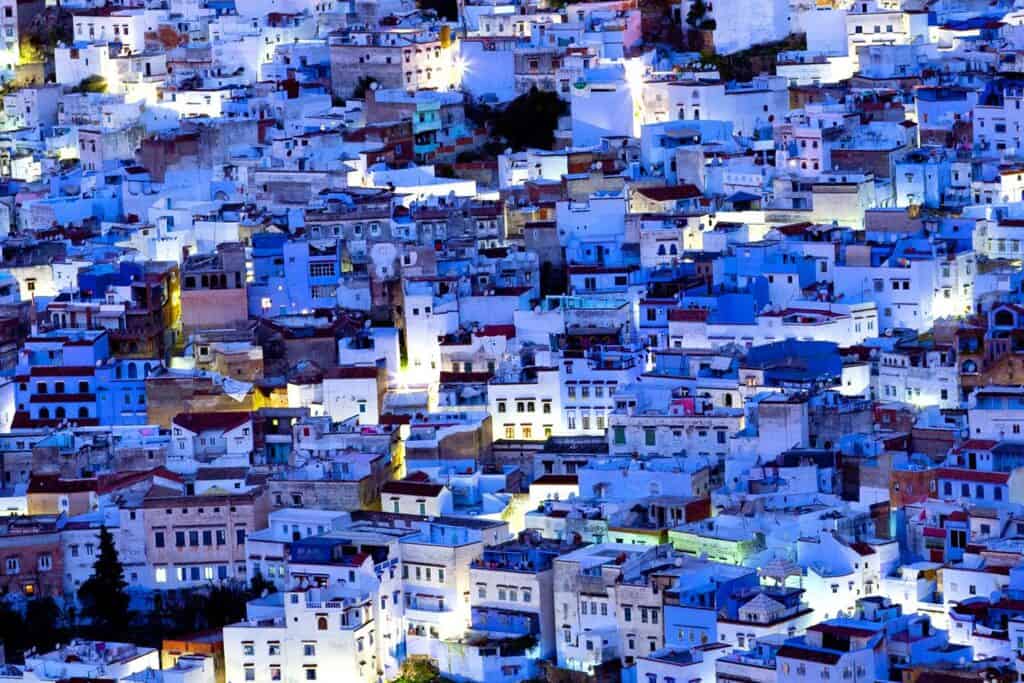
Nestled in the Rif Mountains of Morocco, Chefchaouen, also known as the Blue City, is a mesmerizing place that feels like a dream. Famous for its striking blue-painted buildings, this secret African location offers a serene escape from the bustling markets and cities of Morocco. The blue shades, which cover everything from doors to entire streets, were originally used by Jewish refugees in the 1930s who believed the color symbolized the sky and heaven, encouraging a life of spiritual awareness.
Walking through the narrow, cobbled streets of Chefchaouen, visitors are treated to a visual feast of azure and cerulean, set against the backdrop of the green mountainous landscape. The city is not only a photographer’s paradise but also a haven for those seeking tranquility and inspiration. Local shops offer unique handicrafts, including wool garments and woven blankets, which reflect the artistic heritage of the area.
Beyond its beauty, Chefchaouen is a gateway to exploring the natural wonders of the northern Moroccan terrain. Hiking opportunities abound, with trails leading to viewpoints that offer stunning vistas of the city and beyond. The peaceful atmosphere and picturesque setting make Chefchaouen a must-visit for anyone traveling to Morocco, promising an unforgettable experience of culture and natural beauty.
We hope this journey through the secret wonders of Africa has sparked your curiosity and wanderlust. If you’re eager to discover more hidden gems and travel inspirations, visit our home page at Kawanji Adventures for more articles that will fuel your adventures across the globe.

I remember seeing Morocco in a travel documentary I watched a few years ago and I’ve always wanted to visit! The Blue City looks amazing! Hope I get the chance to go there soon!
For sure Morocco is a fascinating country. Just be prepared for a more assertive style of interaction especially in popular tourist areas where there are plenty of vendors. Happy travels!